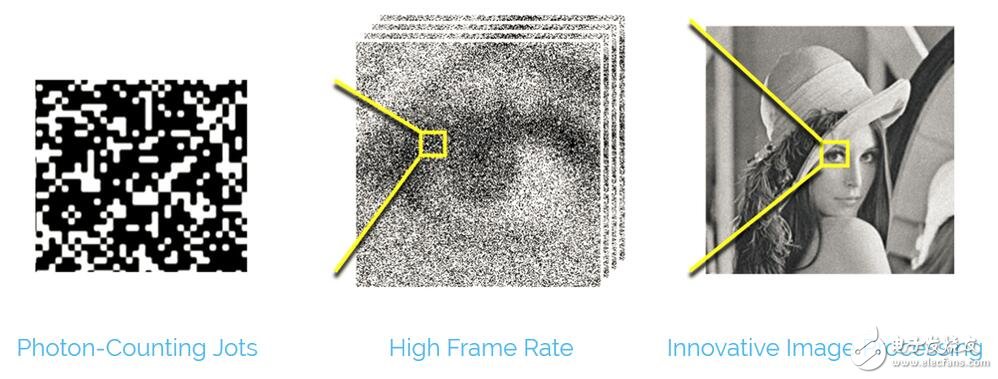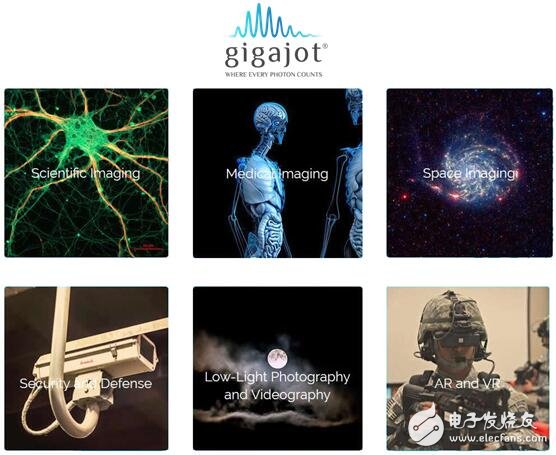According to the James Advisory, a team of engineers at Dartmouth College developed an innovative image sensor chip. One day, it can make your smartphone camera have a super-sense "eyes", even a superhero will be envious. Let's take a look at the related content with the network communication Xiaobian.
The new image sensor comes from Professor Eric Fossum of Dartmouth College and his team, capable of capturing and counting individual photons at thousands of fps frame rates and one megapixel resolution. Even in low-light conditions, the sensor enables high-sensitivity, high-quality, easy-to-operate digital imaging, 3D imaging, and computer vision, making imaging devices "unsighted."
This is not the first imaging technique bred by Professor Eric Fossum. He developed CMOS image sensor technology when he worked at the NASA Jet Propulsion Laboratory twenty-five years ago.

This is a binary single photon photo taken with a one-megapixel Quantum Image Sensor (QIS) with a total power consumption as low as 17mW.
Professor Eric Fossum said: "Approximately 4 billion cameras with integrated CMOS image sensors are produced each year. CMOS image sensors convert optical signals into electrical signals that can be processed to form digital images."
Professor Eric Fossum called his new technology Quanta Image Sensor (QIS) and called the smallest unit in the QIS chip "joints" instead of "pixels", each A single photon can be detected by a jots.
Professor Eric Fossum continued: “Because QIS is sensitive to a single photon, it has an enviable 'sight' that can be seen in faint light. For example, a decorative bulb on a Christmas tree, photons generated every second. The number is as high as 10^19, so you can think about how dim a photon is!"
Others have developed other chips that can detect single photons, but these chips usually require special cooling equipment and are expensive to manufacture. Professor Eric Fossum's QIS chip can operate at room temperature, using standard semiconductor fabrication equipment, and is compatible with CMOS image sensors. Therefore, the technology is more easily adopted by the industry and mass production is achieved.
Chip testing showed that the dark current of the QIS chip was very low at room temperature and 60 °C. At the same time, the researchers also tested high-speed single-photon imaging and showed a resolution of 1 megapixel resolution and 1040 fps. In the future, they will enable QIS chips to scan hundreds of millions or even billions of jots at very fast speeds.

Professor Eric Fossum believes that this innovative technology enables high-speed, high-resolution, accurate photon counting imaging for scientific research, medical, space, security, low-light imaging, augmented reality (AR) and virtual reality (VR), 3D The needs of a range of applications such as imaging. The team has set up a startup called Gigajot Technology to further develop QIS technology and apply it to many promising applications.

“This is a very cool technology!†said Sara Jensen, a microelectronics engineer at Sandia National Laboratories in New Mexico. “I have seen the technical papers for professionals in the camera field, they are very interested, so I think this technology is expected to open a new generation of imaging waves."
However, Professor Eric Fossum said, "Although this technology is exciting, don't expect it to enter smartphones very quickly. For example, the CMOS image sensor technology I developed before has only become a mainstream imaging product for more than 20 years. However, I think The new imaging technology, QIS, may be in the same track as CMOS image sensors!"
“Although the application of QIS is not going to develop very quickly, and CMOS image sensor technology is still very good, I am very willing to see new technologies compete with my old technology. Just because of the new technology, we set up Gigajot Technology. Company!†Professor Eric Fossum said confidently.
The 7-inch tablet can be used as the golden size of a tablet computer. It is small and portable. It can be used at home and outdoors. You can browse the web, watch videos and play games. It is a household artifact. Although the size of the 7-inch tablet is inclined to the tablet, the function is more inclined to the mobile phone, so it can also be used as a substitute for the mobile phone. Compared with other sized tablets, the 7-inch tablet has obvious advantages in appearance and weight. Both the body size and the body weight have reached a very reasonable amount.
1.In appearance, the 7 inch tablet computer looks like a large-screen mobile phone, or more like a separate LCD screen.
2.In terms of hardware configuration, the 7 inch tablet computer has all the hardware devices of a traditional computer, and has its own unique operating system, compatible with a variety of applications, and has a complete set of computer functions.
3.The 7 inch tablet computer is a miniaturized computer. Compared with traditional desktop computers, tablet computers are mobile and flexible. Compared with Laptops, tablets are smaller and more portable
4.The 7 inch tablet is a digital notebook with digital ink function. In daily use, you can use the tablet computer like an ordinary notebook, take notes anytime and anywhere, and leave your own notes in electronic texts and documents.
7 Inches Tablet Pc,Quad Core Tablet 7 Inch,7 Inch Gaming Tablet,Supersonic Tablet 7 Inch
Jingjiang Gisen Technology Co.,Ltd , https://www.jsgisengroup.com